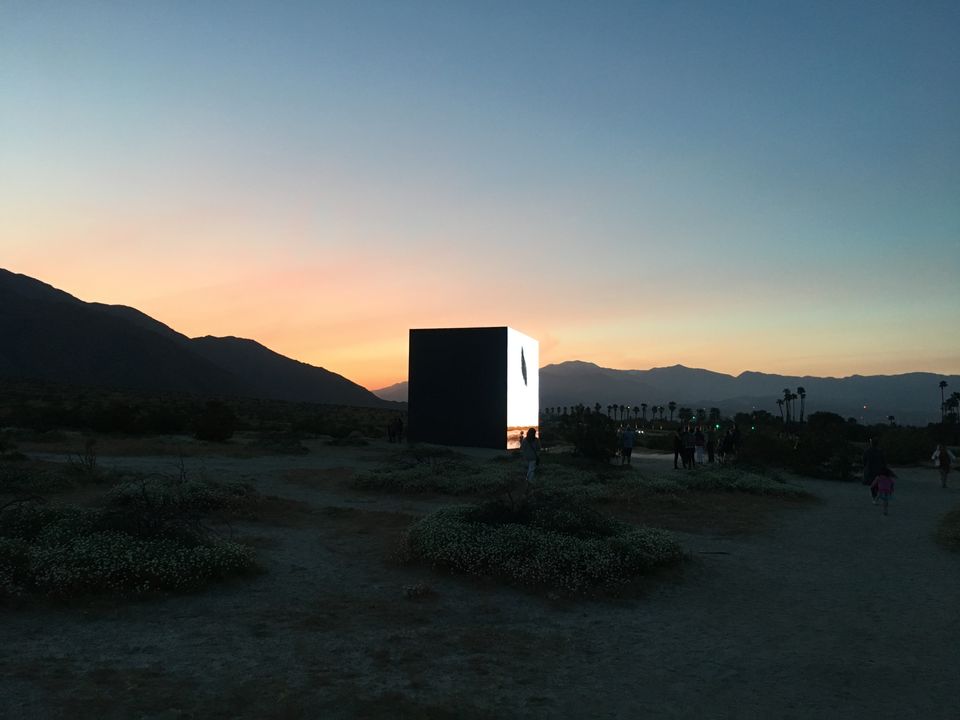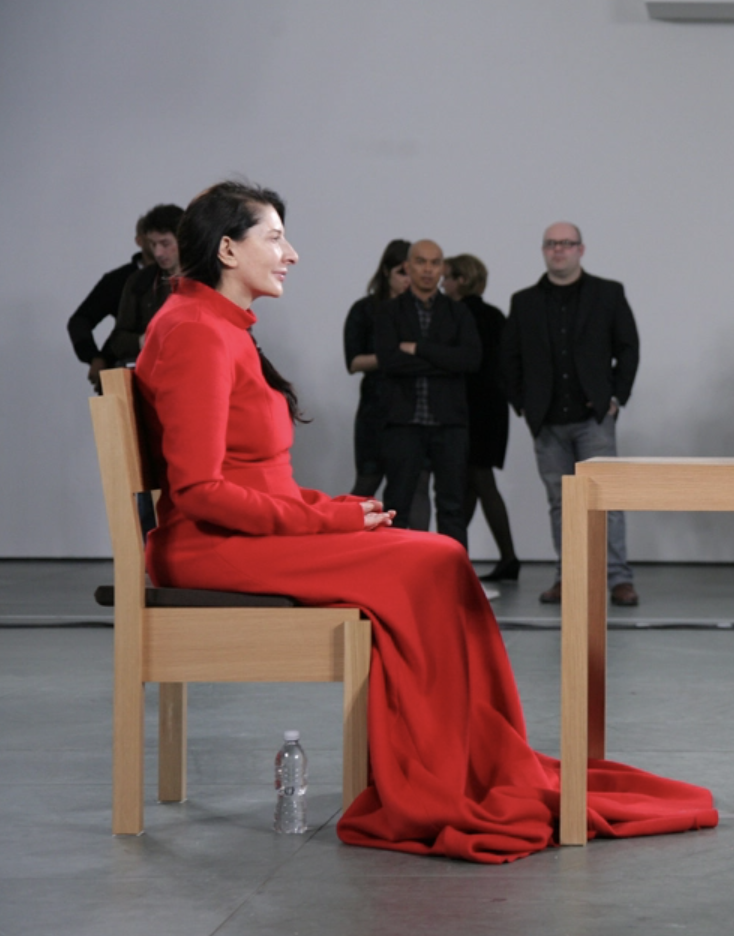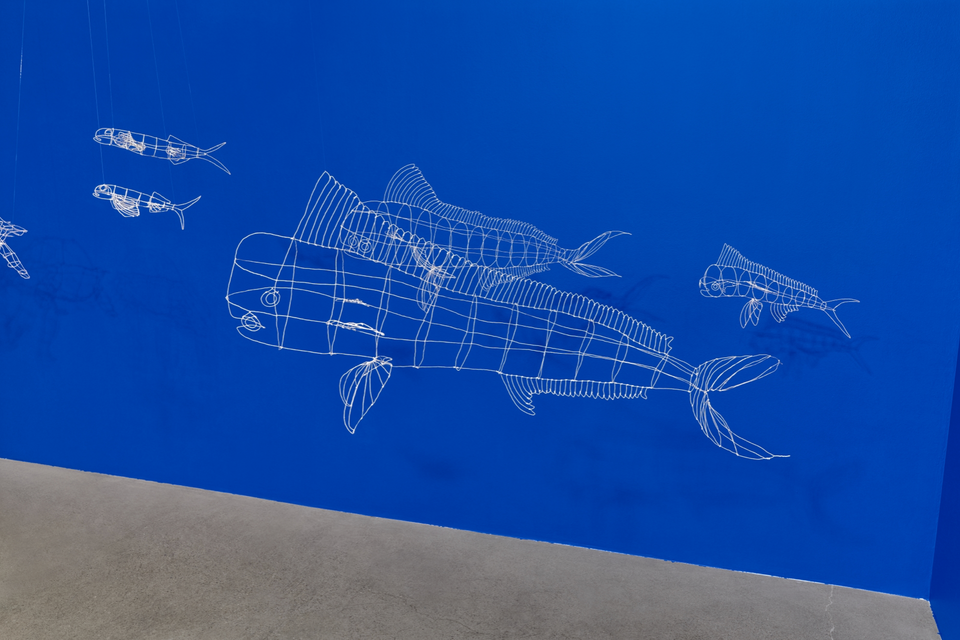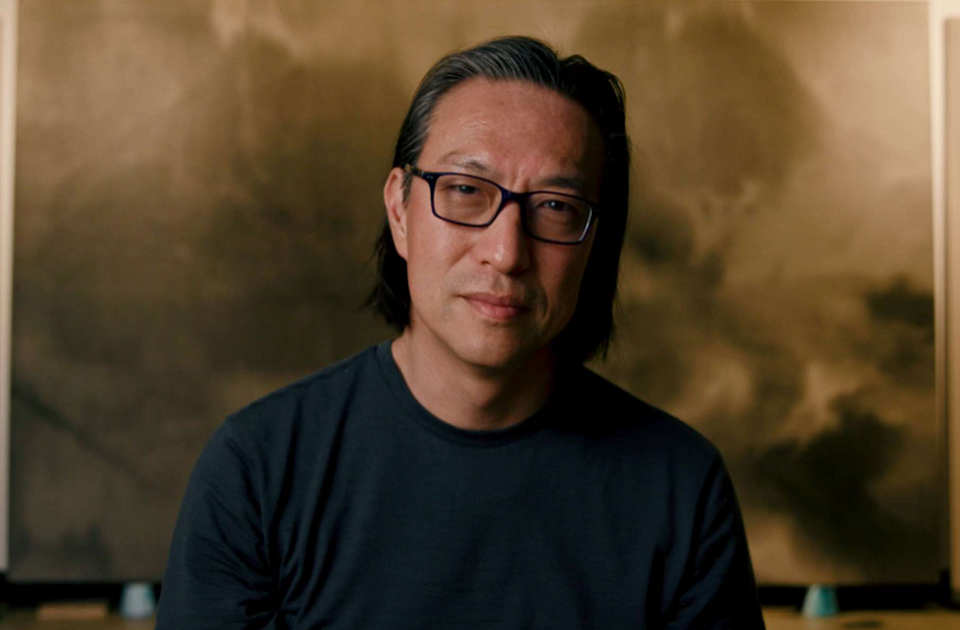Can’t believe: How strange it is to be anything at all. – Jeff Mangum
###
This past weekend was the first weekend of Coachella, the music and arts festival that has grown to gargantuan proportions in recent years. It also marks the beginning of the final week of Desert X, the Coachella Valley art happening about which Brent Everett Dickinson wrote so trenchantly for us last Monday.
At the end of March, I, too, traveled to Desert X, with my friend the painter Dan Callis. Like Brent, we spent the day traversing the vast landscape, following our GPS-informed, Desert X-issued map to mysterious locations, hoping to get what anyone going to see art hopes to get: The News.
And what “News” did we get? More than I want to recount here. Besides, Dickinson’s essay captures so much of what’s weird and enchanting about Desert X and the geography it inhabits and is haunted by. Offering a competing take would be redundant. (I suggest you read that essay before you proceed with this one.)
I do, however, want to address one of the works Dickinson writes about, John Gerrard’s Western Flag (Spindletop, Texas) 2017, an installation that memorializes, and laments, the site of the first oil gusher in Texas, in 1901, at the beginning of a new, petroleum-obsessed century. The sight of that gusher was spectacular:
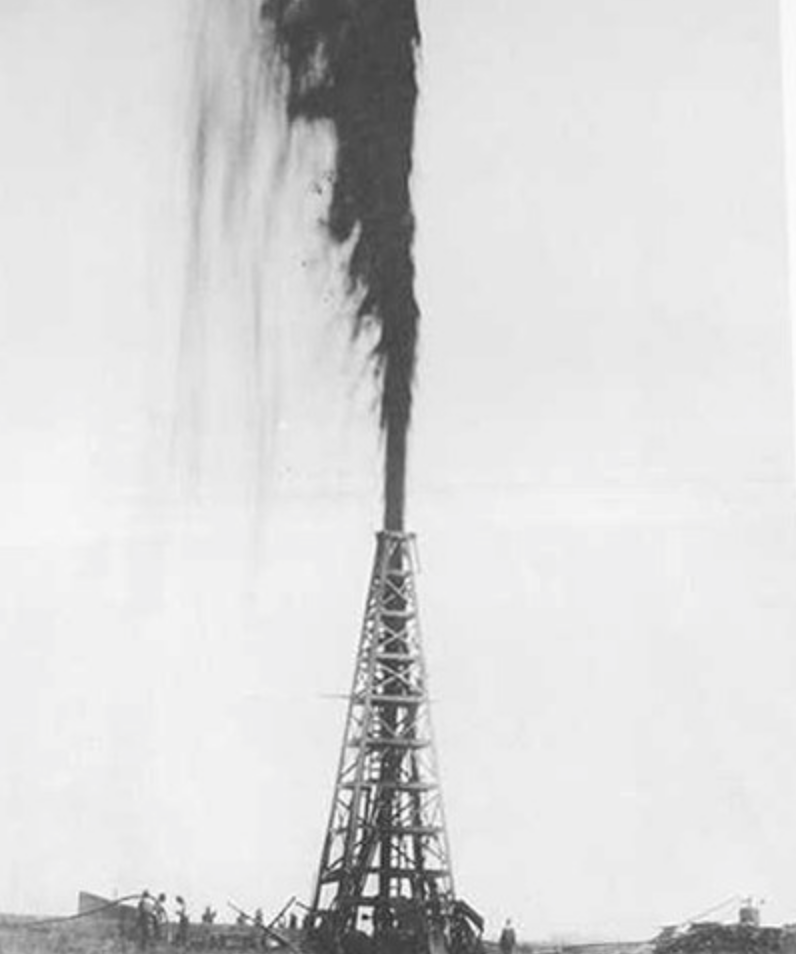
More specifically, I want to address a phenomenon I witnessed while visiting Gerrard’s work, but first, a little context is in order. For visitors heading out to Desert X from Los Angeles, Gerrard’s is one of the first installations they will see, as it’s located on the outskirts of the city of Palm Springs, on the western edge of Desert X’s domain. When we first arrived, it was still fairly early and the sunlight was bright and clear. Dan and I parked the car near the giant black cube, which illuminated, on an LED screen facing the highway, the titular flag. I was impressed that the morning light didn’t obscure the clarity of the image, an apt metaphor for the power of oil to defy the power of the sun.
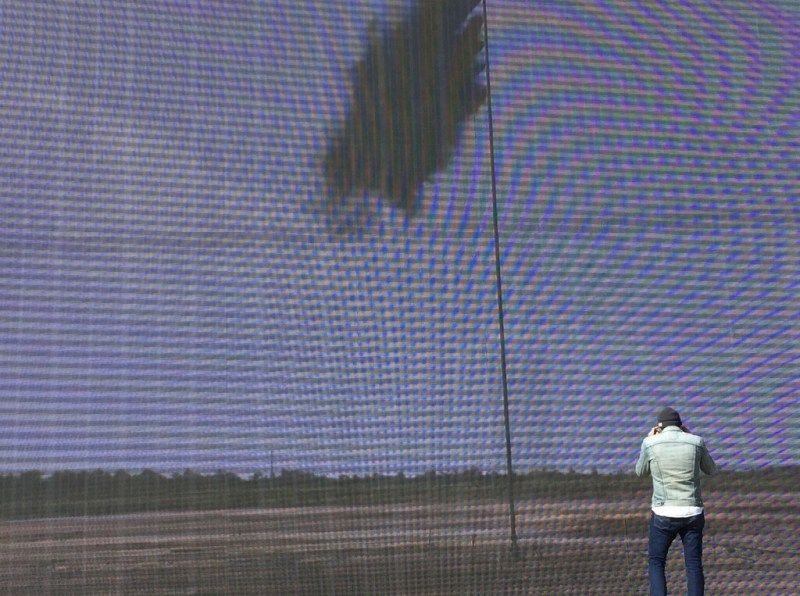
As Dan and I walked toward the screen, it dawned on me that the flag wasn’t a static image but was instead part of a movie. The image constantly changed, as the smoke comprising the flag was tossed by and disappeared into the wind, and as the angle of the “camera” capturing the flag slowly and endlessly circled it. The moving image was on continuous loop, matching (and re-calculating, daily) the sun’s actual trajectory in Beaumont, Texas, near where the gusher was first tapped. In the morning sun, Dan and I examined the piece from afar, then up close. And then we sat on a rock to watch it, both of us enchanted and slightly disturbed by the silent video, soundtracked to a faint, distant generator and cars driving past on the nearby highway. The thing was an object of contemplation. After several minutes, we got up, got in our car, and hit the road to look at other things Desert X had to offer.
At the end of the day, after having spent hours driving across the landscape, we were wrapping up our trip at one of two sites where Nancy Baker Cahill’s Margin of Error could be experienced. Dan mentioned that we were within five-minutes’ drive of Western Flag. The sun was setting, and he wanted to see what Gerrard’s piece looked like in dimmer ambient light. So we went. When we got there we noticed two things, immediately: 1) Western Flag was strikingly sharp and vivid in the twilight, and 2) Many other people must have had the same thought that we did—that this was, indeed, a good time to view the piece.
What struck me about our second visit to Western Flag wasn’t the number of people pulling out their phones to take pictures of the thing. We were doing that, too. Nor was it the festive vibe, akin to when you’re heading to a park on the 4th of July, along with hundreds of strangers, to watch fireworks. No. What stood out to me was first embodied by the teenage girl, lip-sticked and made up, wearing a stylish, revealing dress, walking out from a line of three females facing the screen. She turned around, the flag of oil-smoke billowing behind her, and posed. A woman I took to be her mother snapped a photo, then snapped a few more as the girl turned her body this way and that, tossing her hair and flashing her eyes, pursing and puckering her lips. When she was done, she tottered on her high heels over the desert sand back to her mom to view on the tiny screen the results of her shoot.
Though I shouldn’t have been, I was dismayed. Gerrard’s piece is angry, and I became angry on its behalf. I wanted to ask, “Don’t you recognize the disjunction you’re enacting?” (I’ve never been good at the quick and cutting interrogation.) But I was quickly embarrassed by my anger. I looked around and saw person after person, regardless of gender, posing for the camera—some in studied aloofness, some in coquettish delight, some in strutty confidence.
Gerrard’s website describes Western Flag (Spindletop, Texas) 2017 like this:
Situated at the very gateway to the Coachella Valley and the city of Palm Springs Western Flag acts a stark reminder not just of the willful exploitation and depletion of resources that millions of years ago covered this former sea floor with an abundance of life, but of the energy taken to return the deserted land to its current state of artificial habitation. The invisible gas responsible for climate change is here made visible. Flying the flag of our own self-destruction we are asked to consider our role in the warming of the planet and simultaneous desertification of once fertile lands.
That’s the message I read into the piece that morning, without having seen Gerrard’s description. It was the message I continued to read as I sat there, troubled by the use of Gerrard’s silent scream as a bangin’ visual to better amplify one’s personal brand. (“Yes, yes, we’re all gonna die, but have you checked out my feed?”)
Whatever the artist’s intentions—wanting us to recognize what we’ve done to this planet, and to then have us feel a remorse that kicks us into constructive and hopefully-not-too-late, life-saving action—how a work of art is used may be the stronger indication of its meaning, if by meaning we think of a work’s social and psychological valences. Kurt Cobain reportedly hated the jocks and frat bros rocking out to Nevermind, since they were the ones he was bullied by as an awkward, self-conscious teen. But his songs haunt the radio still, in between spots advertising data plans and desert music festivals, making money for the kinds of people he reviled.
It’s true that concerns about selling out have come to feel quaint, as many others have pointed out. Desert X, while free to the public, is nevertheless a brand worth an enormous amount, if to no one else than to the artists whose work gets exposure through the Instagram influencers hitching their wagon to it, and who thereby get to boost their own social-media cred. What to make of all this would require more time and greater smarts than I can muster.
Maybe Gerrard’s work would have more authority to convict the duck-faced, peace-fingers-flashing fools—God’s children all—if the generator powering it ran on something other than fossil fuels. Or maybe these people posing for likes are ordering their lives according to the modes they’ve been given access to, unaware of the deeper implications, just as I order my life according to modes I tell myself I’ve fully chosen, unaware of the deeper implications…
Or maybe Gerrard’s work is best used when it pushes the viewer away from itself and toward other vistas. When I removed my attention from the hordes thronged before the screen in the deepening shadows, and made my way toward the landscape beyond the projection box, I looked west, to the pale yellow, pink and purple light fading behind the mountains, which were sharply black against the sky, like paper cut-outs on a puppet stage. What is this place that we get to call home? How strange it is to be in it, how strange it is to be anything at all. Come on, my people! Don’t you know where you are?

